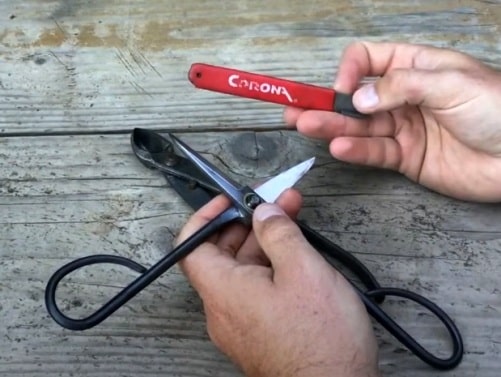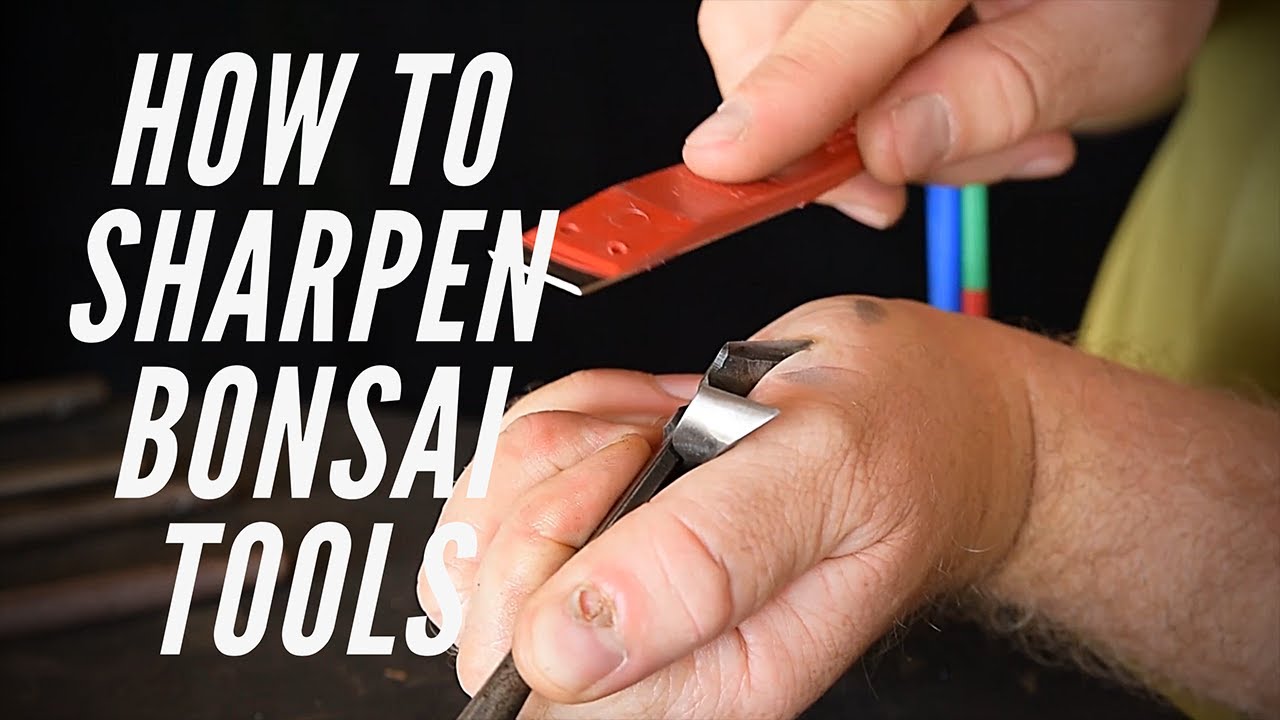To sharpen bonsai tools, carefully grind the cutting edge and then hone it using a sharpening stone. The process involves maintaining a consistent angle while sharpening and regularly checking the sharpness of the tools.
Introducing this step-by-step guide to sharpening bonsai tools. Properly sharpened bonsai tools are essential for maintaining the health and beauty of your bonsai trees. When pruning or shaping your bonsai, having sharp tools ensures clean cuts and minimizes stress to the tree.
Sharpening your bonsai tools requires attention to detail and the right technique. We will walk you through the process of sharpening your bonsai tools, including the tools you need, step-by-step instructions, and tips for maintaining sharpness. By following this guide, you can keep your bonsai tools in top condition and enjoy beautiful and thriving bonsai trees.

Credit: www.mybonsaitools.com
Why Sharpening Bonsai Tools Is Important
Sharpening bonsai tools is crucial for several reasons. Firstly, it extends their lifespan, ensuring they last longer. Secondly, it helps maintain precision and control while trimming and shaping the bonsai tree. This is essential to achieve the desired results. Additionally, sharpened tools promote the overall health of the bonsai tree.
They enable clean cuts, preventing any unnecessary damage that blunt tools may cause. Moreover, sharp tools decrease the likelihood of infection or disease transmission between trees, ensuring the health of your entire collection. In this blog post, we will explore the importance of sharpening bonsai tools and the benefits it brings to both the tools themselves and the trees they are used on.
So, let’s dive in and discover how to sharpen bonsai tools effectively.
Tools Needed For Sharpening Bonsai Tools
To sharpen bonsai tools, you will need a whetstone or sharpening stone to restore their edges. Additionally, using honing oil or water will help lubricate the tools during sharpening. Don’t forget to prioritize safety by wearing protective gloves to avoid any accidents.
Once the tools are sharpened, consider applying lubricating oil to keep them functioning smoothly. Remember, the key to effective sharpening is using the right tools and techniques to maintain the quality of your bonsai tools. Follow these steps to keep your tools in their best condition for a beautiful bonsai garden.
Keep in mind that a sharp tool is crucial for precise cuts and overall health of your bonsai trees. Happy sharpening!
Step-By-Step Guide To Sharpening Bonsai Tools
To sharpen bonsai tools effectively, start by cleaning and preparing your tools. Choose the right sharpening stone and dampen it before proceeding. For pruning shears, identify any dull or damaged areas and position them on the stone. Maintain consistent pressure and angle, alternating directions for even sharpening.
When sharpening bonsai scissors, observe the blade’s condition and position them on the stone. Apply light pressure and follow the blade’s curve. As for bonsai knives, inspect the blade’s sharpness and position the knife flat on the stone. Maintain a steady angle and apply light pressure, repeating on the other side of the blade.
After sharpening, rinse and dry your tools before applying lubricating oil and storing them properly. Sharpening bonsai tools is essential for maintaining their functionality and prolonging their lifespan.
Extra Tips For Sharpening Bonsai Tools
Regularly inspect your bonsai tools for any signs of damage or dullness to ensure optimum performance. Using a sharpening guide can help you achieve more precision when sharpening your tools. Over-sharpening should be avoided as it can cause damage to the tool’s edge.
Practice proper maintenance and storage techniques to prolong the lifespan of your bonsai tools. By following these extra tips for sharpening bonsai tools, you can maintain their effectiveness and keep them in top condition. Remember to inspect, sharpen, and store your tools correctly for best results.

Frequently Asked Questions For How To Sharpen Bonsai Tools
How Often Should I Sharpen Bonsai Tools?
You should sharpen your bonsai tools every few months, or when you notice they are becoming dull. Regular sharpening will ensure clean cuts and prevent damage to your trees.
What Tools Do I Need To Sharpen Bonsai Tools?
To sharpen bonsai tools, you will need a sharpening stone or file, a lubricant such as oil or water, and a cloth for cleaning. It is also helpful to have a guide or jig to maintain the correct angle while sharpening.
How Do I Sharpen Bonsai Tools Without Damaging Them?
To avoid damaging your bonsai tools while sharpening, take care to maintain the original bevel angle and follow the natural curve of the blade. Start with a coarser grit and work your way up to a finer grit for a polished finish.
Can I Sharpen Bonsai Tools Myself Or Should I Seek Professional Help?
While it is possible to sharpen bonsai tools yourself, it is always a good idea to seek professional help if you are unsure or inexperienced. A professional will have the expertise and proper tools to ensure your bonsai tools are sharpened correctly.
How Can I Tell If My Bonsai Tools Need Sharpening?
If your bonsai tools are not cutting cleanly or are causing damage to your trees, it is likely time to sharpen them. You may also notice an uneven or dull edge on the blades. Regular maintenance and inspection will help you identify when sharpening is necessary.

Should I Oil My Bonsai Tools After Sharpening?
After sharpening your bonsai tools, it is recommended to apply a thin coat of oil to prevent corrosion and keep the blades in good condition. Be sure to wipe off any excess oil before using the tools to avoid transferring oil onto your trees or soil.
Conclusion
To summarize, sharpening your bonsai tools is an essential skill that can greatly improve your bonsai gardening experience. By maintaining sharpness, you not only ensure precise and effective cuts, but you also promote the overall health and aesthetics of your bonsai trees.
Remember to follow the proper techniques for sharpening different types of tools, such as shears, knob cutters, and concave cutters, as well as using the right tools for the job. Regular maintenance and care will prolong the lifespan of your tools and save you money in the long run.
Additionally, always prioritize safety by wearing protective gear and handling your tools with caution. By implementing these sharpening practices into your bonsai routine, you can achieve beautiful and healthy bonsai trees that will be a source of pride and joy for years to come.
Happy sharpening!

